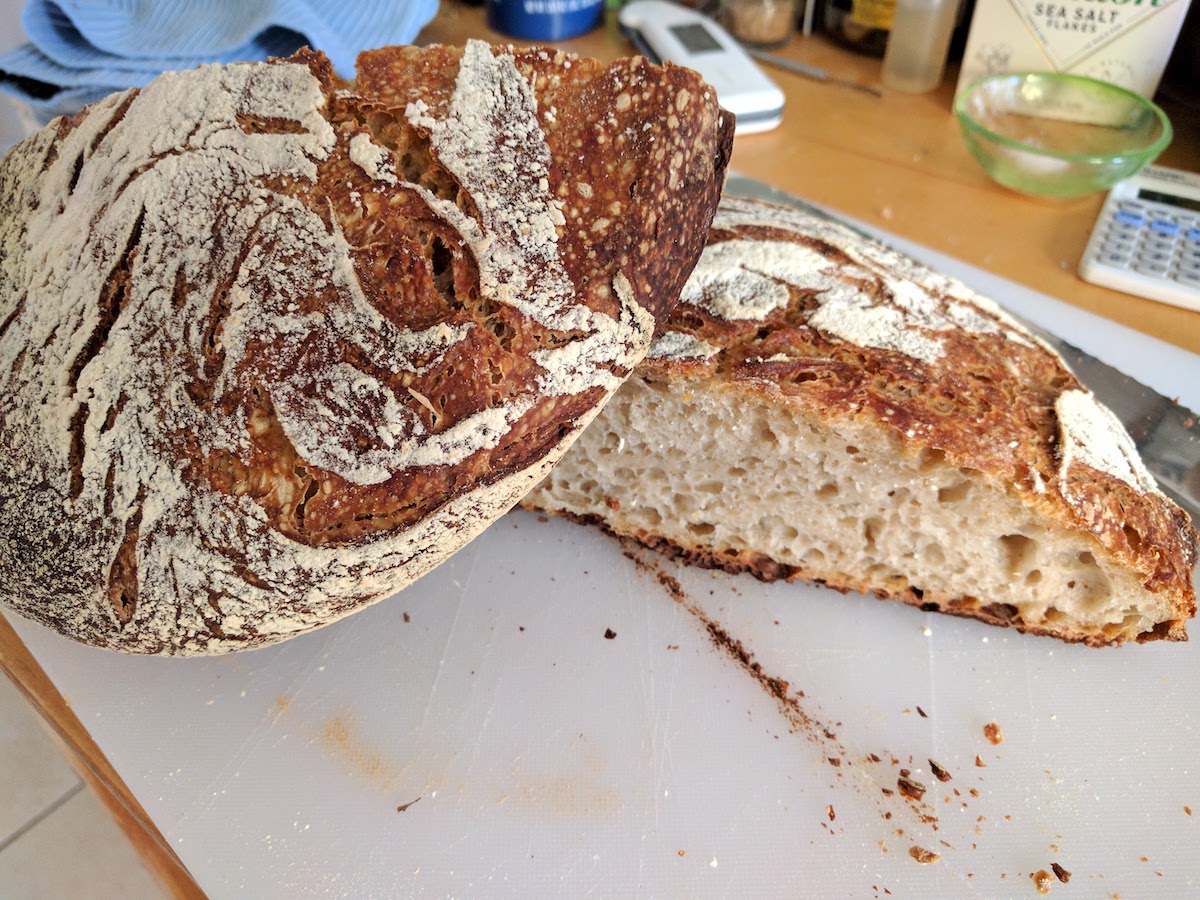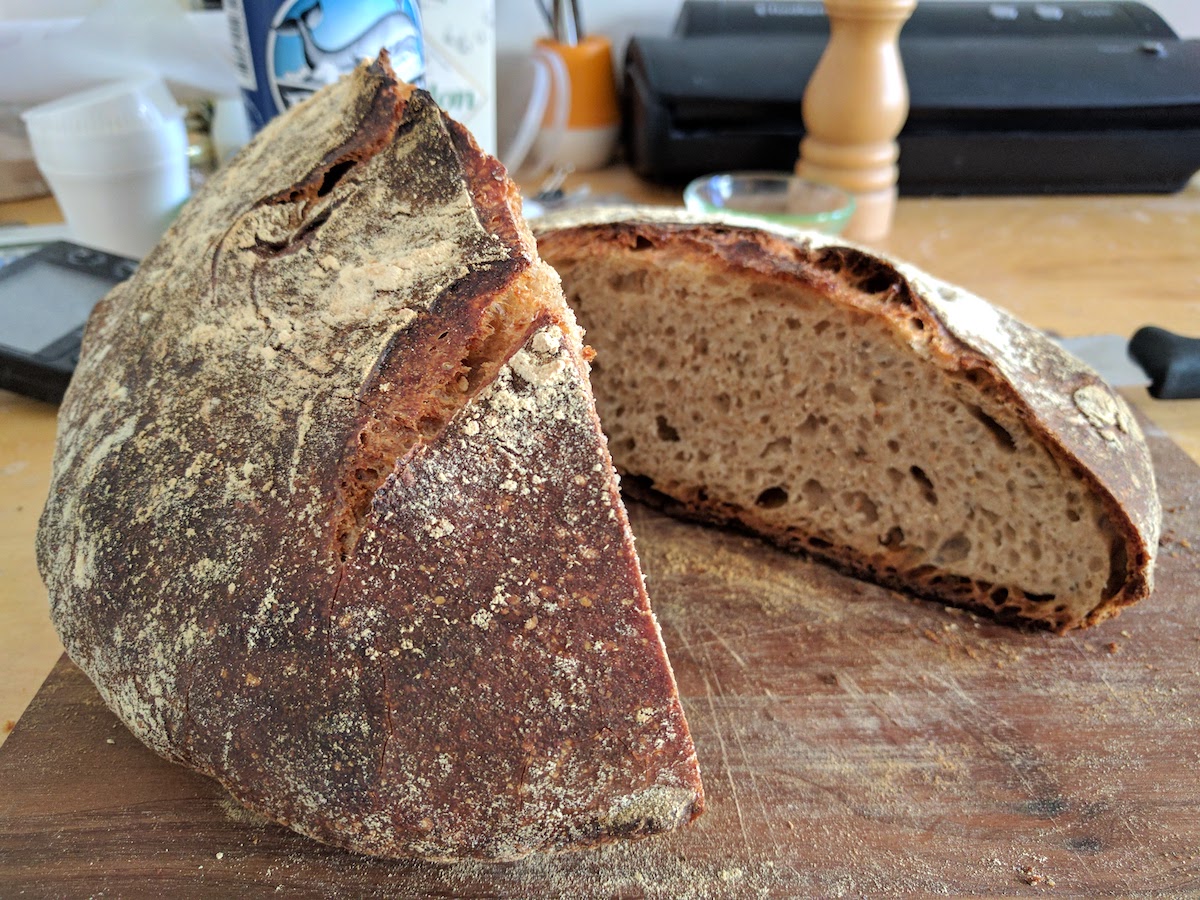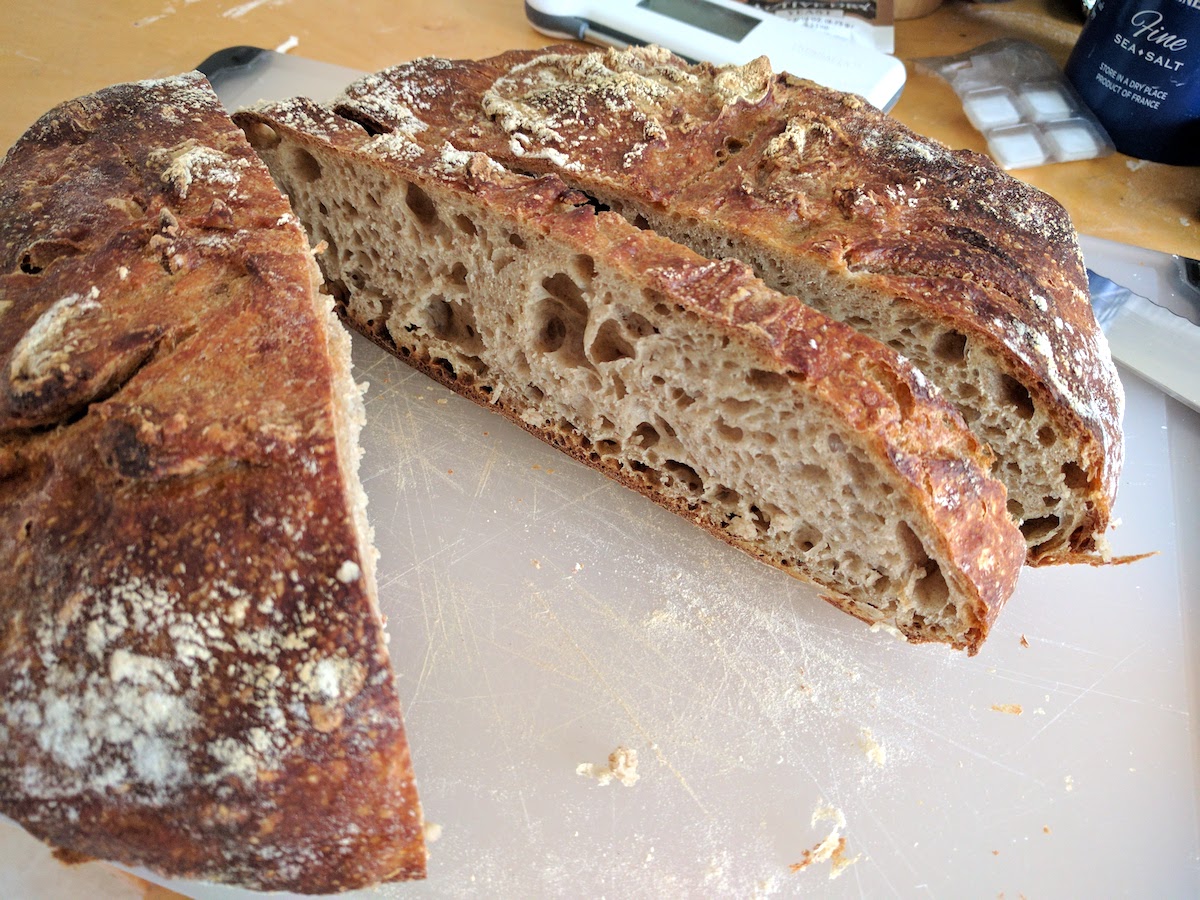Sourdough Bread - Continued observations

I have been making the same few sourdough recipes continuously throughout 2017. They are generally reliable, coming out well about 70% of the time. When they fail, they fail in pretty specific ways, so I’ll be working on these issues in 2018.
Successes
Here are a few successful loaves from 2017. I am relying mostly on Ken Forkish’s excellent Flour Water Salt Yeast, which I encourage you to buy. Forkish’s approach is well-explained, and I appreciate the fact that he treats temperature (both ingredient and environment) and time as distinct ingredients. At first I thought it was convenient that every recipe used exactly 1000g of flour (so you could get a sense of the proportions of everything without a lot of mental math), I quickly had to just halve all his recipes and add a post-it with the correct weights. But I appreciate the 1kg basis level because it made it easy to begin understanding what hydration and different flour proportions will mean for the resultant loaf.
Here are some Field Blend #2 loaves:

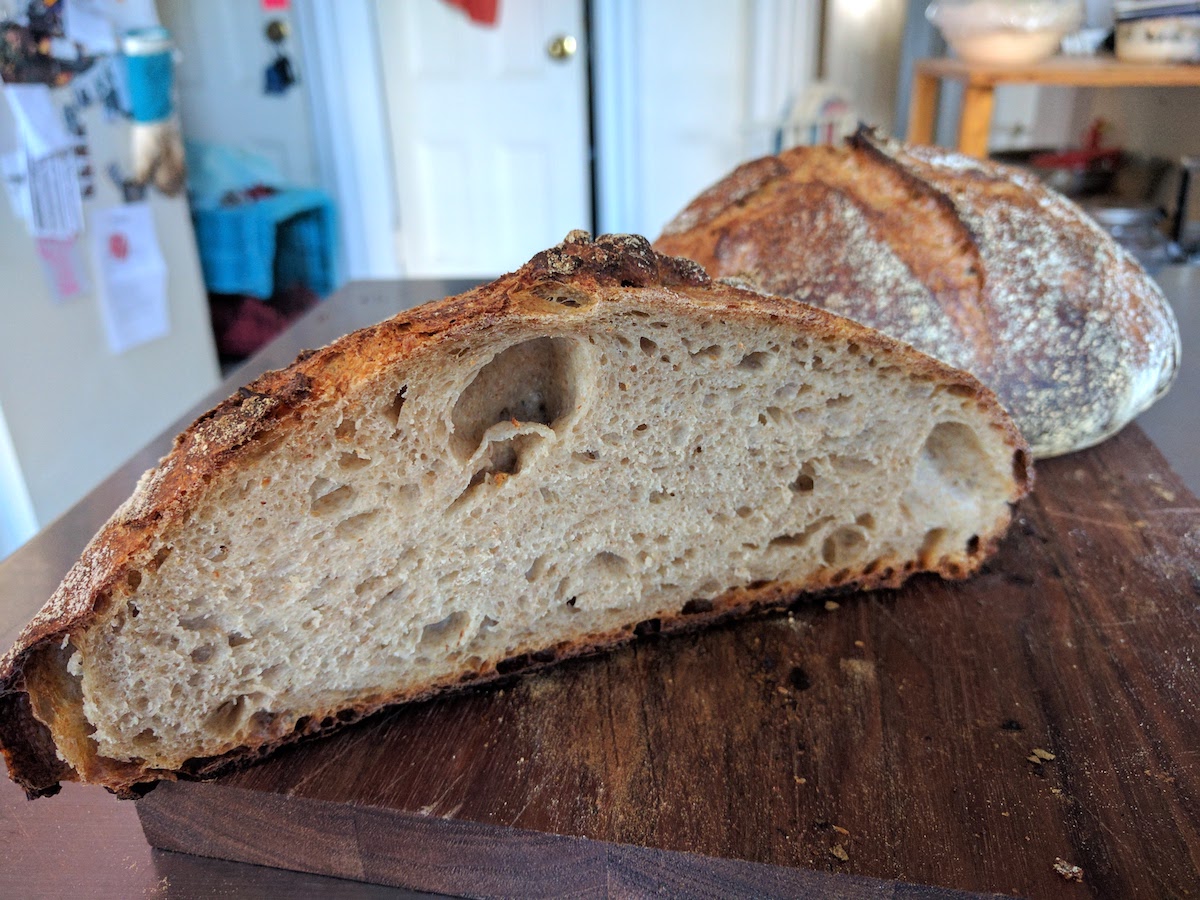
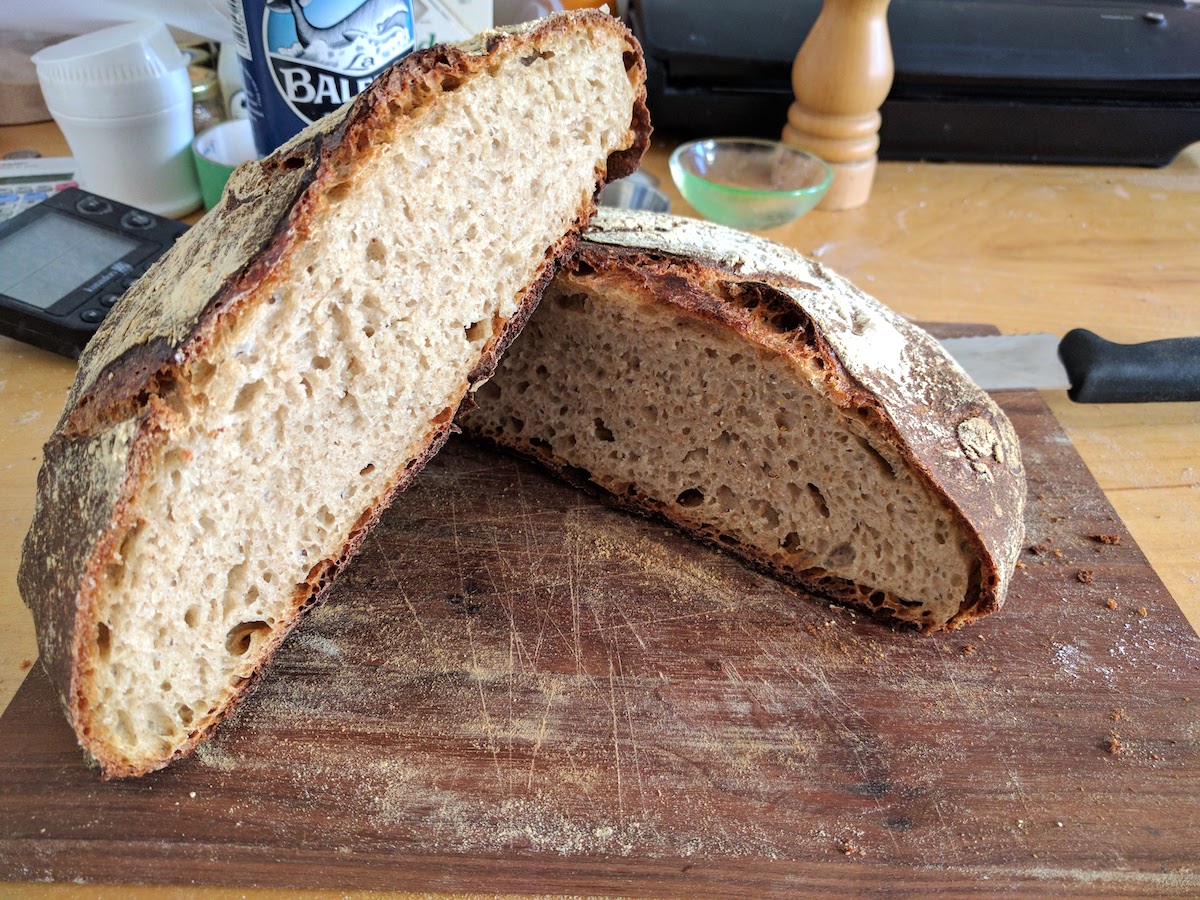
…and here are some 40% Overnight Wheat loaves:
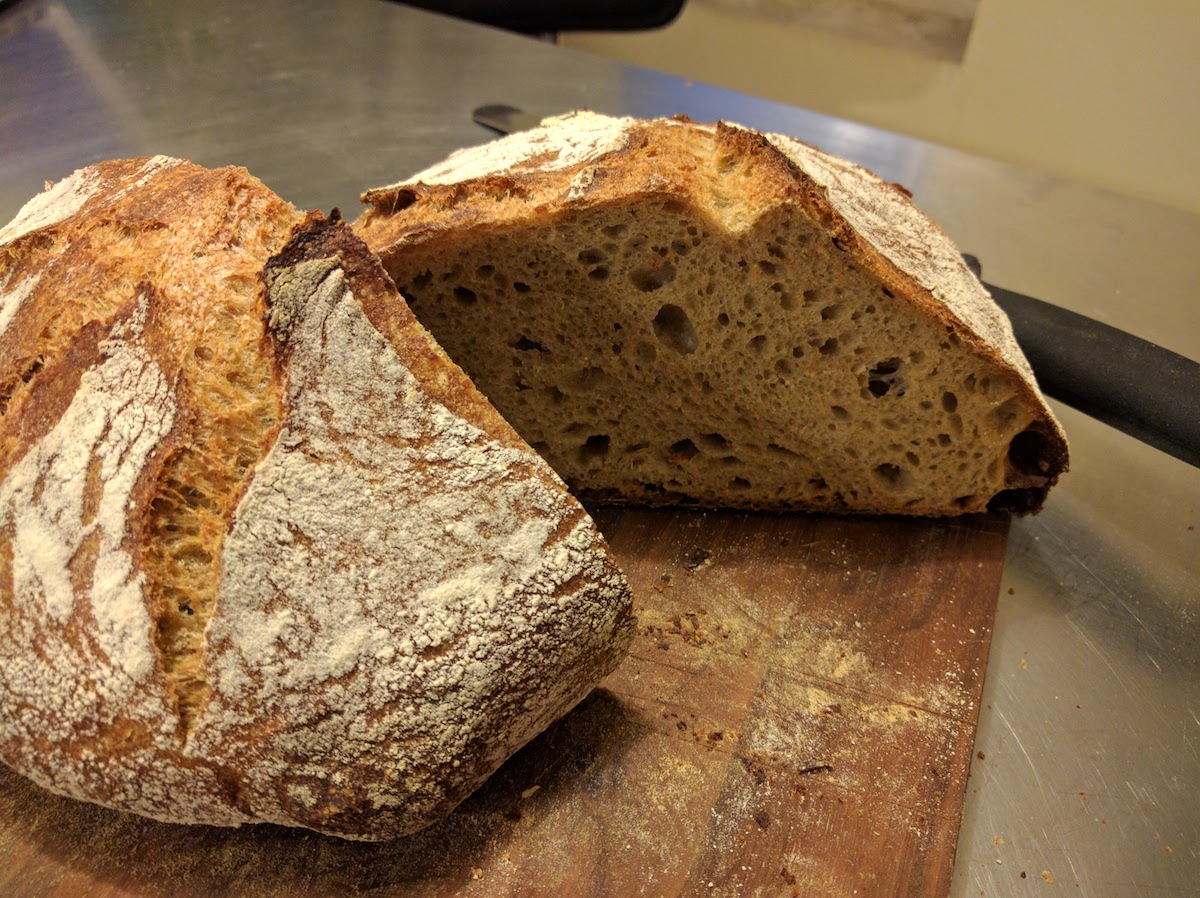
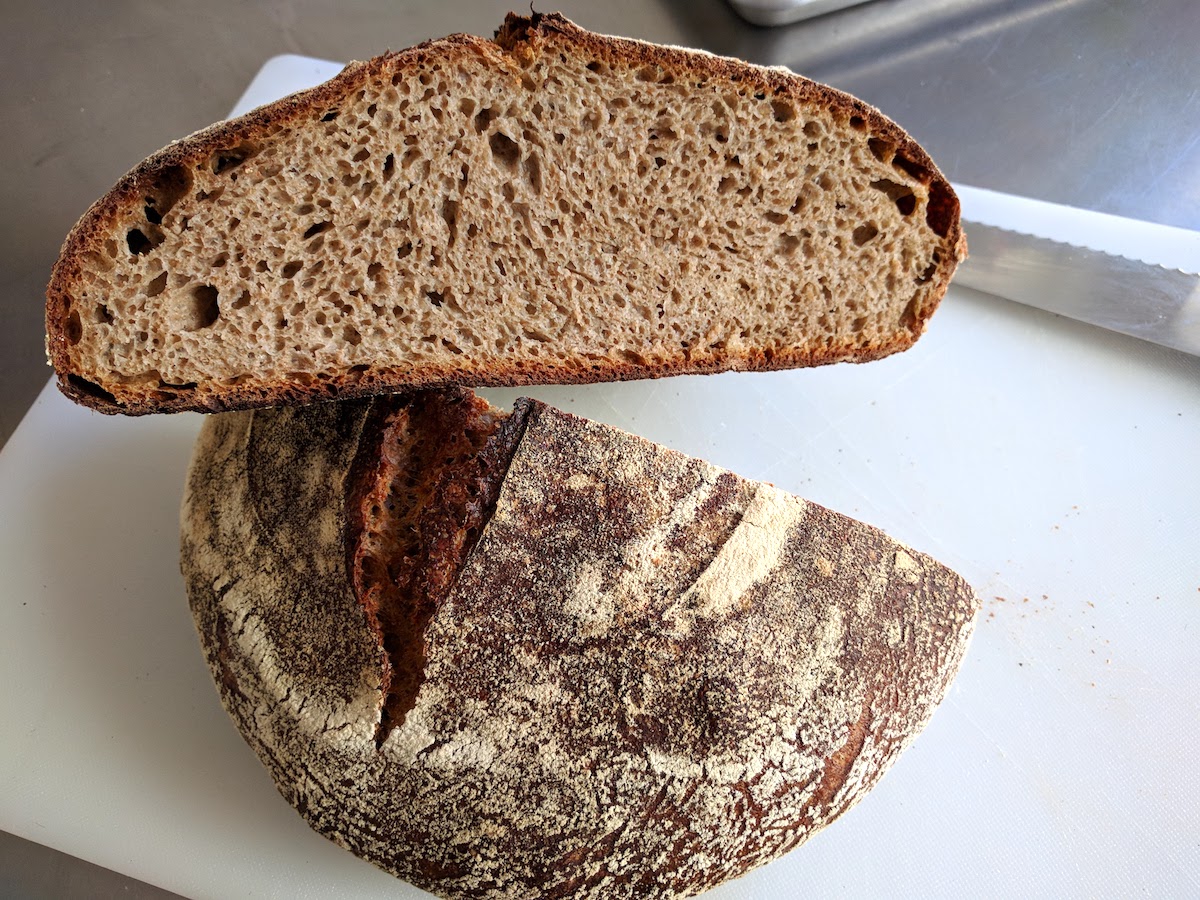
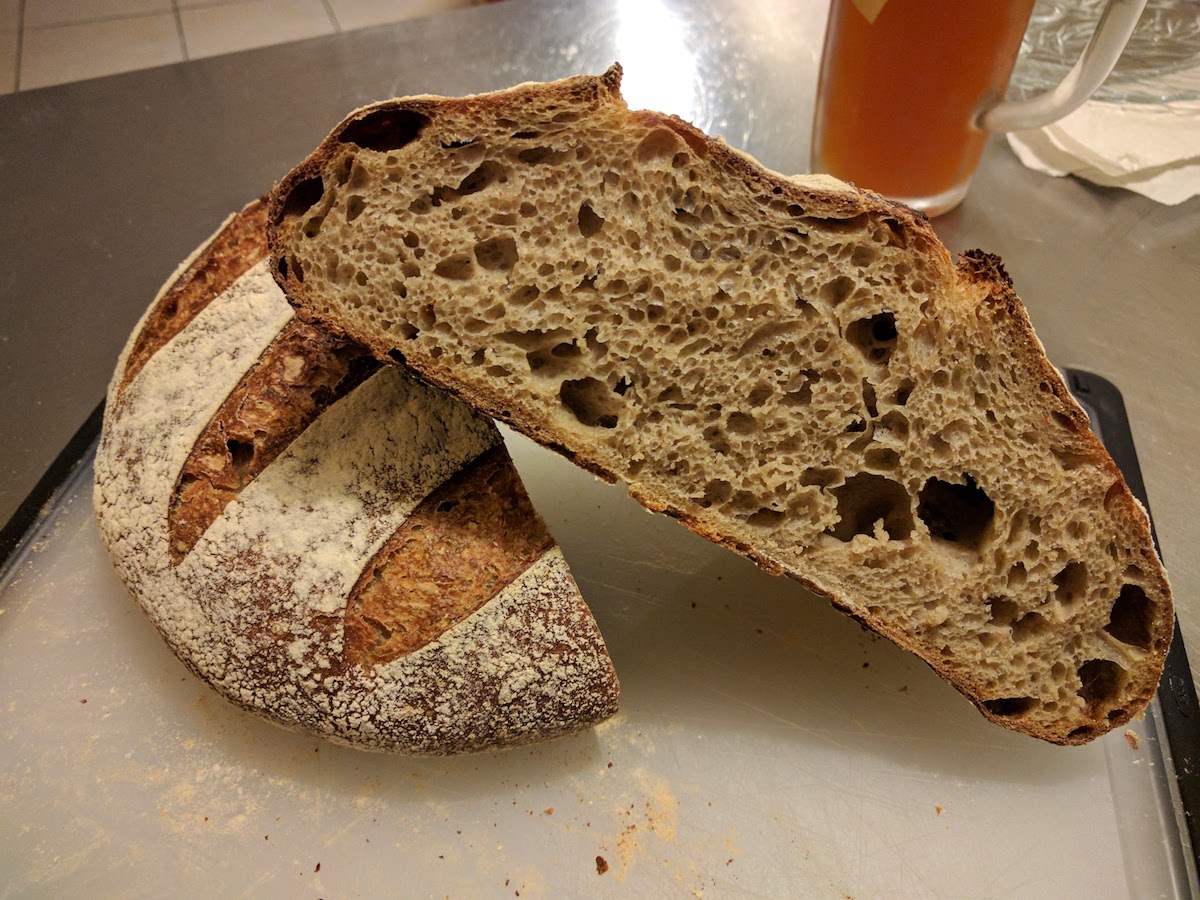
Failures
My frequent failures have frustratingly few root causes. Often, and unpredictably, the proofing loaf will stick to the banneton at the last minute, and the tearing of the loaf in this situation generally ruins its rise, yielding a tasty, acceptably-crumbed loaf that is unacceptably short, about 1.5 inches tall, maximum.
Another common failure stems from not understanding when the starter / levain is ready for use. Often, it seems, I will not wait long enough between bringing the stater up to kitchen temperature, feeding it, and adding it to the dough.
